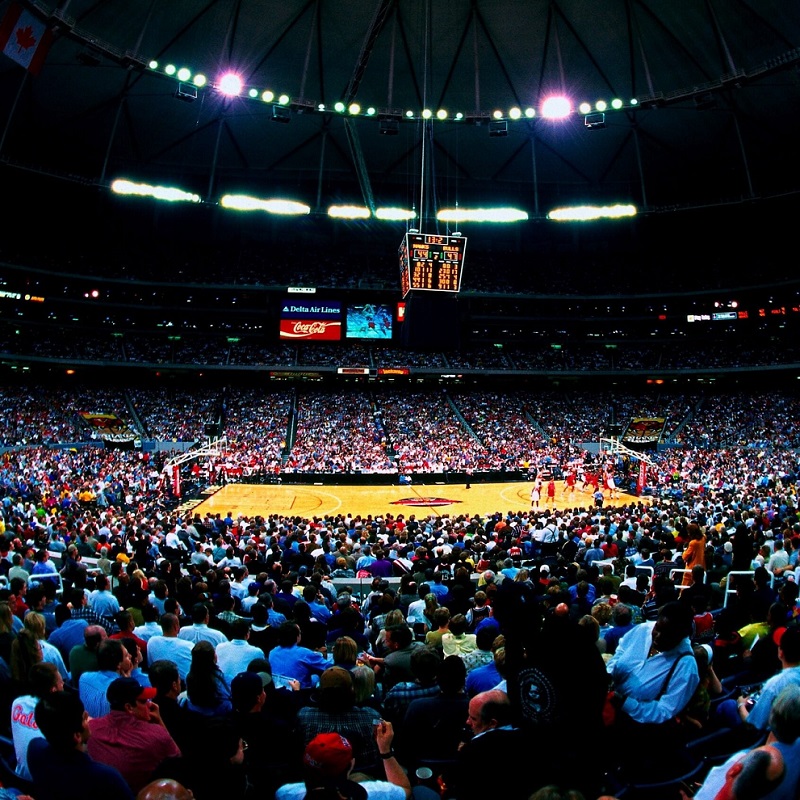Introduction: Understanding Basketball Court Sizes
When diving into basketball, a common question arises among players and fans alike: how many yards is a basketball court? Knowing the dimensions of a basketball court is critical for players, coaches, and enthusiasts. Whether you’re gearing up for a pick-up game or watching the NBA finals, understanding court size provides valuable context for the game’s flow and strategies.
In this article, we will thoroughly explore the dimensions of basketball courts across different levels of play: NBA, NCAA, and high school. By examining these variations, you’ll gain insights into how court sizes influence gameplay and player performance. This knowledge benefits aspiring athletes and enhances the viewing experience for fans, deepening their appreciation for the sport. Let’s delve into the unique characteristics of basketball courts!
Dimensions of an NBA Basketball Court
The NBA operates under strict regulations regarding court dimensions. To answer the query, “how many yards is a basketball court in the NBA?” a standard NBA court measures 94 feet long and 50 feet wide. When converted to yards, that translates to approximately 31.33 yards in length and about 16.67 yards in width.
These NBA dimensions accommodate professional athletes’ skill levels and the fast pace of the game. One notable feature is the three-point line, which is farther from the basket compared to NCAA or high school courts. It is set at 23.75 feet from the basket, roughly 7.91 yards at the top of the arc. The line measures 22 feet from the baseline, approximately 7.33 yards.
In addition to the three-point line, the paint area—the rectangular key in front of the hoop—measures 16 feet wide and extends 19 feet from the baseline. This area is crucial for players during offensive and defensive play. Understanding these dimensions is pivotal for aspiring players, as it highlights the importance of shooting range and strategic spacing within an NBA court.
A larger court significantly affects how players engage in fast breaks and transition plays. Athletes maintain exceptional stamina and speed to cover the expanded space quickly. The greater size encourages players to develop their shooting skills, making long-range shooting more prevalent at this level. Coaches design drills focusing on utilizing this space effectively, leading to open shots and easy layups. Overall, the NBA court dimensions reshape how players approach various in-game situations.
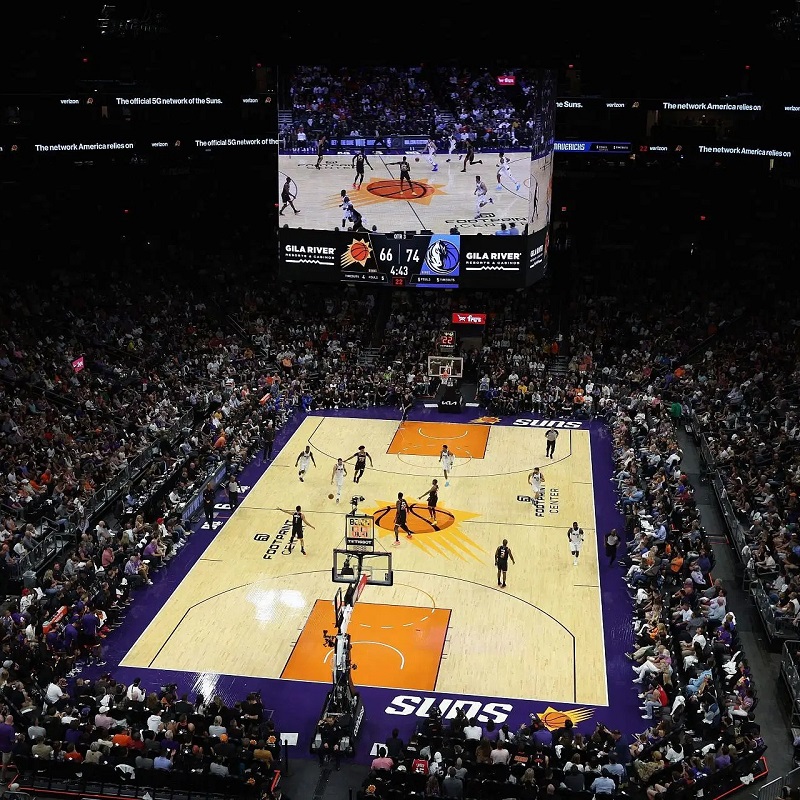
NCAA Basketball Court Dimensions
When examining how many yards is a basketball court in the NCAA, we find that dimensions differ slightly from the NBA. An NCAA basketball court also measures 94 feet in length and retains the same width of 50 feet, equating to approximately 31.33 yards long and 16.67 yards wide.
The three-point line distance in NCAA basketball is closer than that in the NBA. The NCAA three-point line is set at 22.1 feet from the basket, which is about 7.37 yards. This distance allows collegiate players slightly easier access to long-range shots. Being aware of this difference prepares players for the transition to NBA distances while allowing them to practice shooting beyond the arc with a shallower distance initially.
These similarities in court size between NCAA and NBA allow young athletes aspiring to reach high levels to better prepare. They experience similar dimensions, enabling them to adapt their skills without significant changes. Players benefit from familiarization in their early years, which translates into improved comfort and confidence as they progress.
The dimensions impact player performance based on audience expectations and game style. Young players may feel increased pressure to develop their shooting range, as college-level play demands efficiency and speed. Coaches emphasize agility in offense and defense, leading to a more fluid style of play. Training sessions typically involve newer drills tailored to the collegiate environment.
As college athletes prepare for potential careers at higher levels, they understand the importance of practice. Frequent practice on NCAA courts allows players to adjust their techniques and shooting skills, often leading to increased confidence upon moving to a professional arena.
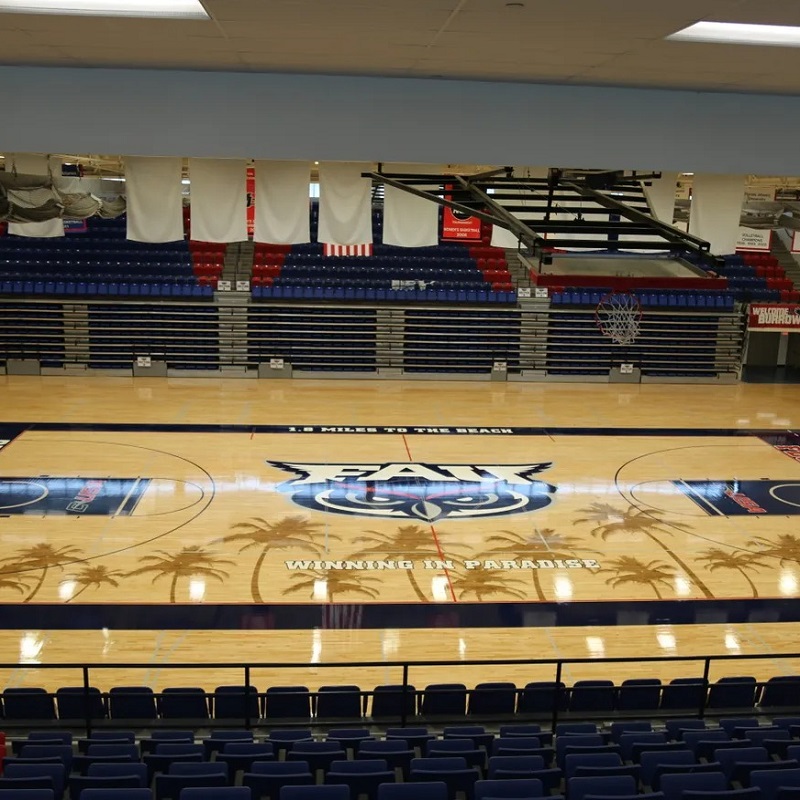
High School Basketball Court Size
As we explore how many yards is a basketball court at the high school level, we find a common dimension: high school basketball courts typically measure 84 feet long and 50 feet wide. In terms of yards, this translates to 28 yards in length and 16.67 yards in width. This sizing suits developing players, allowing them to work on fundamentals without the expansive court needed for professional or collegiate play.
Furthermore, the three-point line for high school courts usually measures 19.75 feet from the basket, roughly 6.58 yards. This closer distance helps young athletes enhance their shooting mechanics and boosts their confidence. The shorter court and closer three-point line create an environment where players can grow into their skills and develop proper shooting form before advancing to NCAA or NBA distances.
High school coaches find understanding these dimensions essential for structuring practices and drills. Coaches design sessions focusing on ball movement and team play, helping players develop foundational techniques. Pizza drills help teach young athletes how to find open teammates while improving court awareness.
Another significant aspect of high school basketball is the physicality of play. The shorter court size leads to more physical confrontations under the basket, which can influence matchups. Players often learn to adapt to this physicality by working on their strength and conditioning.
During scrimmages, players must adjust their movements to navigate around defenders while operating in tighter spaces. Coaches regularly incorporate strategy discussions, allowing players to understand the need to read defenses and make quick decisions. Developing these strategies at the high school level sets players up for success in future competitions.
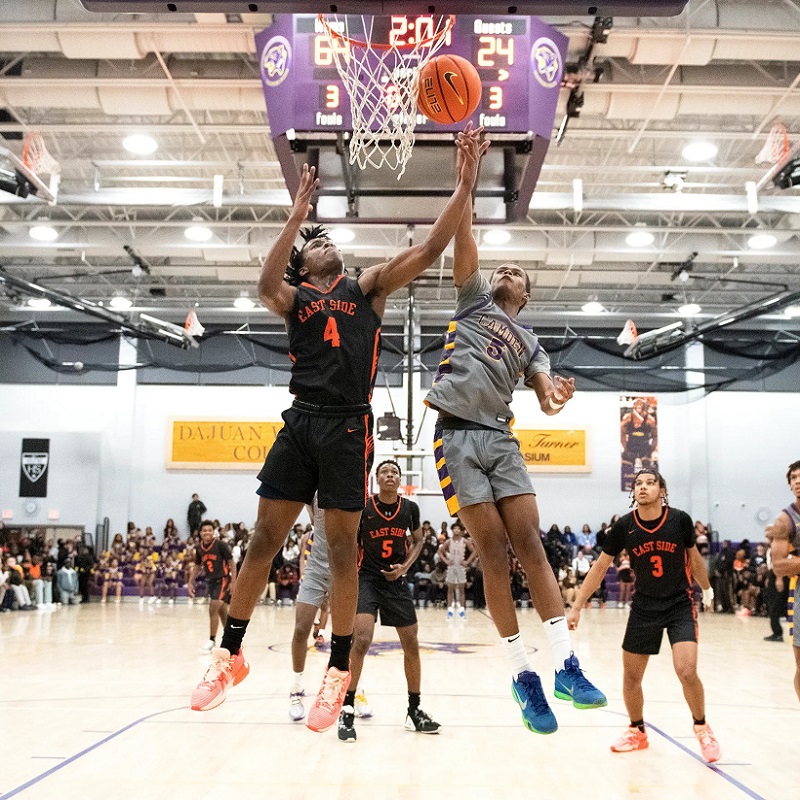
Impact of Court Size on Gameplay
Now that we’ve established how many yards is a basketball court at different levels, it’s crucial to explore how these dimensions affect gameplay and player strategies. Court size directly influences speed, spacing, and overall style of play.
An NBA court’s expansive length and width promote a faster-paced game. Players require advanced movement skills combined with the ability to create space between defenders. With more room to operate, teams emphasis ball movement and three-point shots, leveraging longer distances to create open shots. This strategic spacing allows players to showcase individual capabilities in shooting, cutting, and driving.
Conversely, NCAA and high school games often present a more condensed style due to the shorter court size. This leads to increased physicality and more emphasis on inside scoring. Players frequently engage in close-contact situations and drive to the basket, utilizing quick cuts and picks to create scoring opportunities.
Variable pace also differentiates the three levels of competition. On NBA courts, flair and entertainment play significant roles, leading to crowd-pleasing fast breaks and impressive dunks. In contrast, high school games often emphasize teamwork and fundamental skills, such as proper passing techniques and defensive tactics. Understanding these dynamics helps coaches shape their game plans.
Knowing how many yards is a basketball court assists players in recognizing their strengths and weaknesses during gameplay. Each player must adapt their skills based on the different dimensions. For instance, a guard may need to refine their shooting accuracy with NBA-range threes while also improving driving and cutting skills.
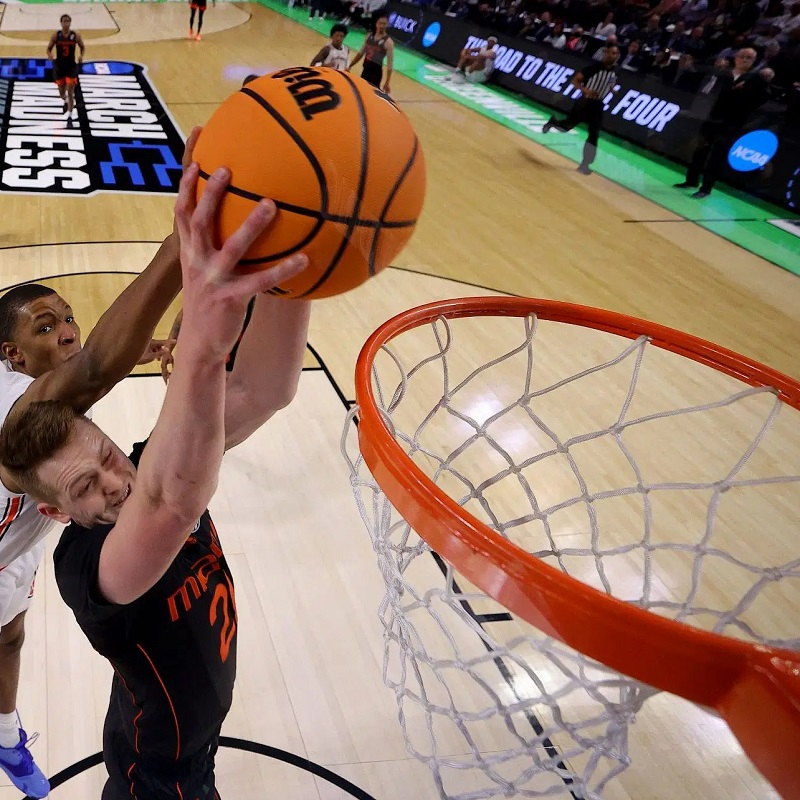
The Importance of Adapting to Different Court Sizes
For players aspiring to transition from one level to another, adapting to various court sizes is imperative. Whether moving from high school to college or from college to the pros, adjusting one’s gameplay can significantly affect individual and team success.
When understanding how many yards is a basketball court, players need to consider how it influences fundamental skills. For example, high school athletes transitioning to college may need to practice shooting from a farther distance. Continuing to adapt becomes essential, as they develop the confidence needed to operate in various spaces.
In practice, players often work on specific drills tailored to levels they will encounter. As college players prepare for potential NBA careers, drills simulate the pace and spacing they will experience on larger courts. Receiving feedback from coaches and teammates plays a vital role during these transitions.
Continuous practice and targeted drills help players make necessary adjustments. Knowing court dimensions also prepares players mentally and provides insight for effective performance.
Incorporating feedback helps players strengthen individual skills while enhancing teamwork. This adaptability makes players more versatile and ensures an easier transition as they move between competitive levels.
Building Confidence Through Knowledge
Understanding the dimensions of various basketball courts increases players’ confidence. Knowledge about how many yards is a basketball court at different levels helps young athletes cultivate better expectations surrounding their training.
When players know the distances they need to cover, they can engage in more focused training sessions. These sessions can center around specific goals tied to the distance and dimensions of the court they may encounter in games. Effective goals set the stage for measurable progress.
Additionally, incorporating less formal play is essential. Many young athletes enjoy friendly games, such as 21 or half-court pick-up games. These less-stressful environments allow players to explore and practice their skills, increase their confidence, and forge connections with teammates.
As players broaden their horizons and seek out competition on different courts in various settings, they enhance confidence in their adaptability. Seeking out opportunities on different surfaces further develops their skills, empowering them to thrive in diverse gameplay situations.

Conclusion: Embracing the Dimensions of the Game
In conclusion, understanding how many yards is a basketball court is key to appreciating the game at different levels. From the expansive NBA court measuring 94 feet in length to the more manageable high school courts at 84 feet, each setting presents unique challenges and opportunities for developing players.
By exploring the differences between NBA, NCAA, and high school sizes, athletes can prepare for the demands each level presents. Coaches and fans should embrace these variations, as they shape the way basketball is played and enjoyed.
As you step onto the court—whether it’s a high school gym, a college arena, or an NBA stadium—let the dimensions guide your game. Recognizing and adapting to these measurements will enhance your skills and deepen your love for the intricacies of basketball.
